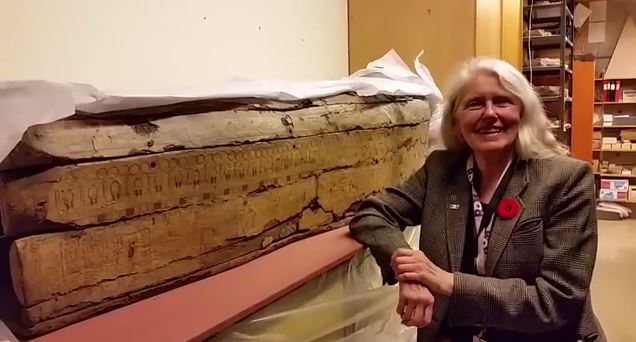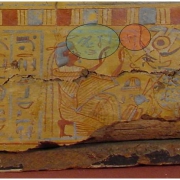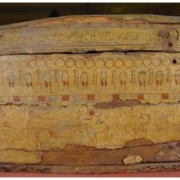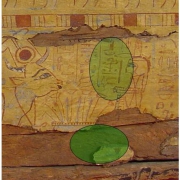Introducing Nefret-Mut
Posted: October 24, 2014 - 09:58 , by royal
Categories:
Ancient Cultures, Egypt, World Culture |
Comments () | Comment
Dr. Andrew Nelson from the University of Western Ontario, who lead the team that examined “Justine”, announced today that in collaboration with Gayle Gibson, Royal Ontario Museum Egyptologist, they had discovered “Justine’s” real name and occupation when she was alive more than 3,000 years ago. Using CT scans and other modern day technology some of “Justine’s” past was previously revealed including that while she was mummified and her internal organs were removed that her tongue had also been taken out which is not consistent with mummification. Early Egyptians believed they would need their tongue to introduce themselves in the next life.
The new findings come from an examination by Gayle Gibson, an Egyptologist at the ROM, around the context of the coffin “Justine” was found in. That excavation took place in 1905 – 1906 and involved Dr. Charles Trick Currelly, the first Curator of the Royal Ontario Museum which is now celebrating its 100th anniversary. "Justine" is part of the ROM’s world-renowned Egypt collection.
 In this image a male figure worships the goddess Hathor in the form of a cow as she emerges from the Western hills.
In this image a male figure worships the goddess Hathor in the form of a cow as she emerges from the Western hills. Although the figure is male, the three-pronged sign in front of his nose is actually a flower, and was used as a female determinative. The signs in front of his face (in the blue bubble ) are Neferand
Although the figure is male, the three-pronged sign in front of his nose is actually a flower, and was used as a female determinative. The signs in front of his face (in the blue bubble ) are Neferand  In the detail, the larger green oval in front of the mummy’s face is “Chantress of Amun-Re” while the lower green oval shows where the name was. Just above her face you can see the three-pronged ‘flower’ sign that shows that what cane before it, at the bottom of the previous line, was a woman’s name.
In the detail, the larger green oval in front of the mummy’s face is “Chantress of Amun-Re” while the lower green oval shows where the name was. Just above her face you can see the three-pronged ‘flower’ sign that shows that what cane before it, at the bottom of the previous line, was a woman’s name.